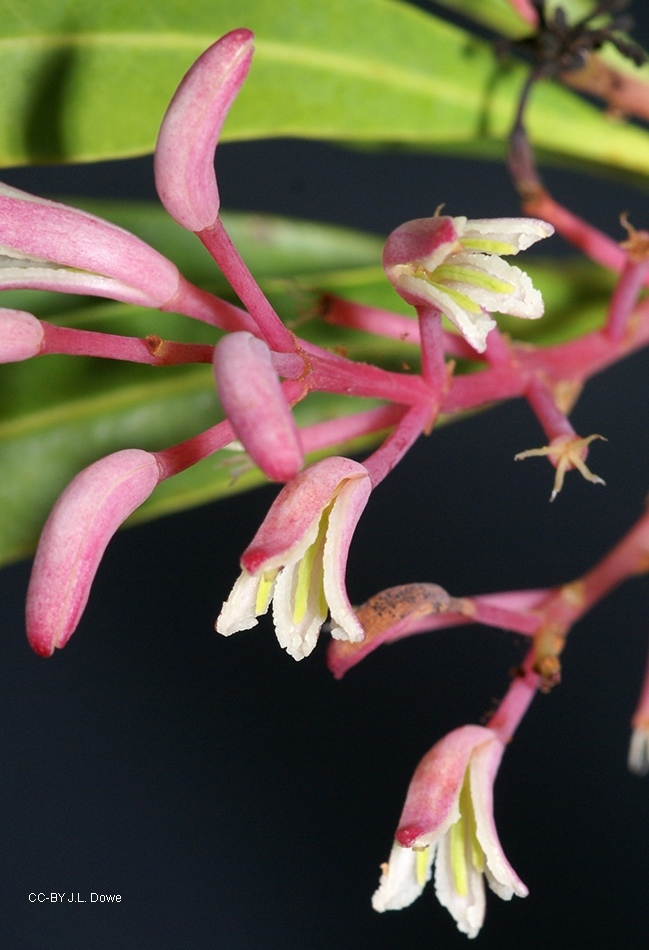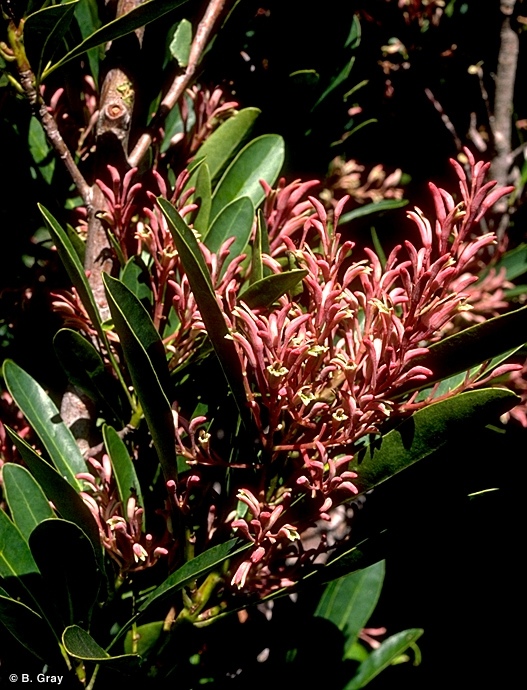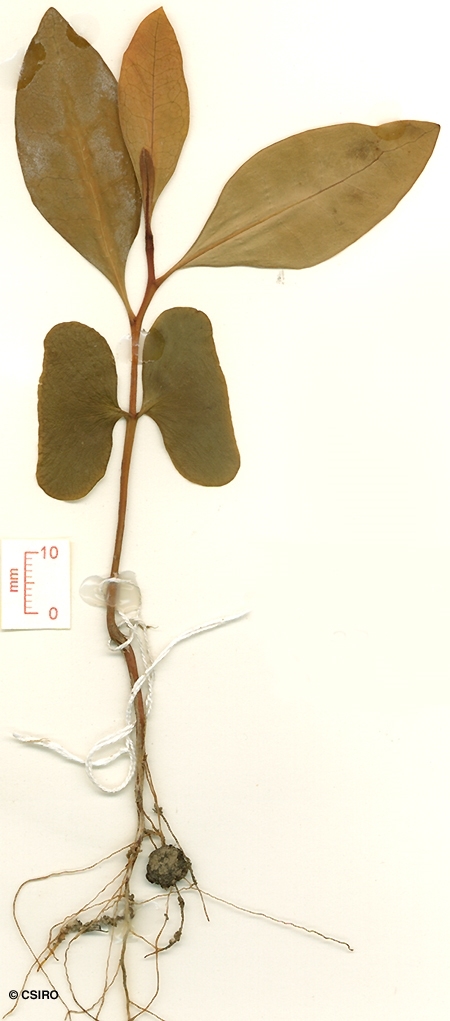Australian Tropical Rainforest Plants - Online edition
Placospermum coriaceum C.T.White & W.D.Francis







White, C.T. & Francis, W.D. (1924) Proceedings of the Royal Society of Queensland 35: 79. Type: Mount Alexander, near Daintree, North Queensland, ex Queensland Herbarium, without collectors name (flowering specimens, type).
Oak, Rose Silky; Rose Silky Oak; Plate Seeded Oak
Large black or dark red speckles often apparent in the outer blaze. Fine, inconspicuous oak grain in the wood and a corresponding lace-like pattern in the inner blaze.
Lateral veins scarcely visible on the under surface of the leaf blade but forming loops just inside the blade margin. Leaf blades about 8-25 x 1.6-4.3 cm, usually thick and fleshy.
Cotyledons resemble small butterfly wings, each cotyledon +/- reniform, broadly cuneate at the base, about 15-18 x 25-45 mm. At the tenth leaf stage: leaf blade elliptic to narrowly elliptic, apex acute or acuminate, base cuneate or attenuate; terminal bud clothed in prostrate, pink or reddish hairs. Seed germination time 42 to 70 days.
A large tree in nature. The juvenile plants have large and attractive leaves and are becoming popular as indoor plants.
Produces a useful general purpose timber but despite the fact that it is a member of the Proteaceae it does not exhibit a conspicuous oak grain.
Wood specific gravity 0.69 Cause et al. (1989).





